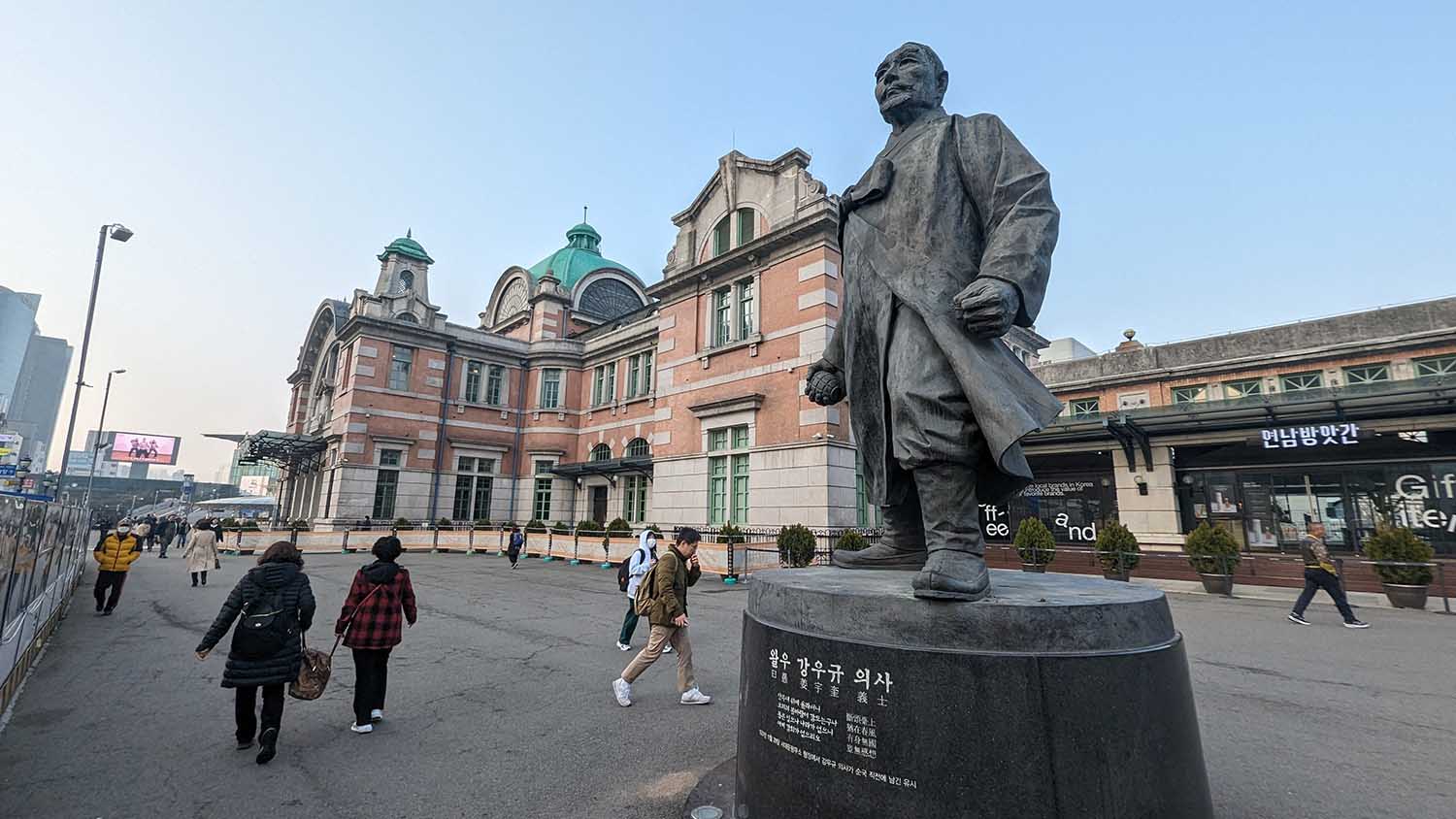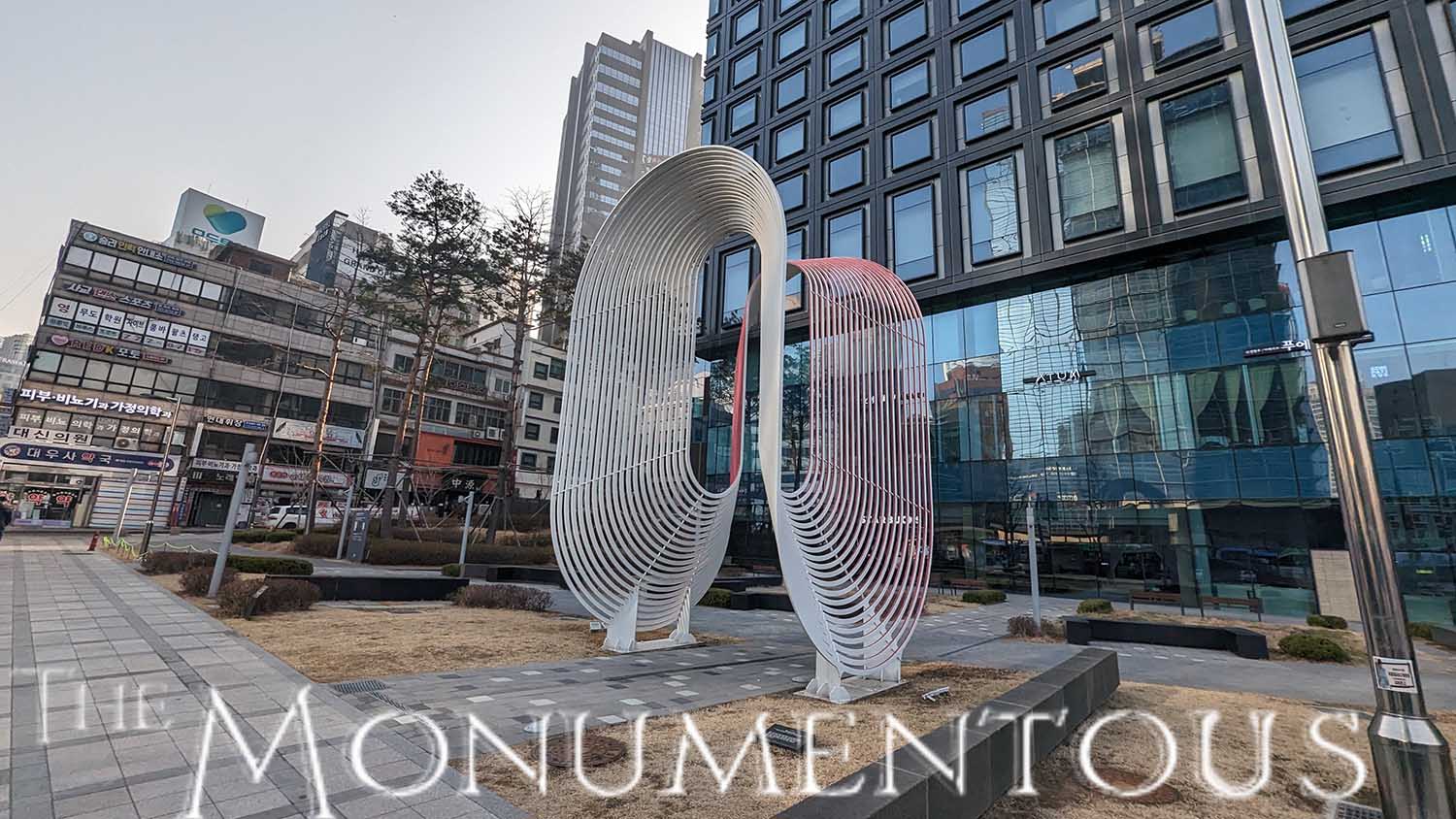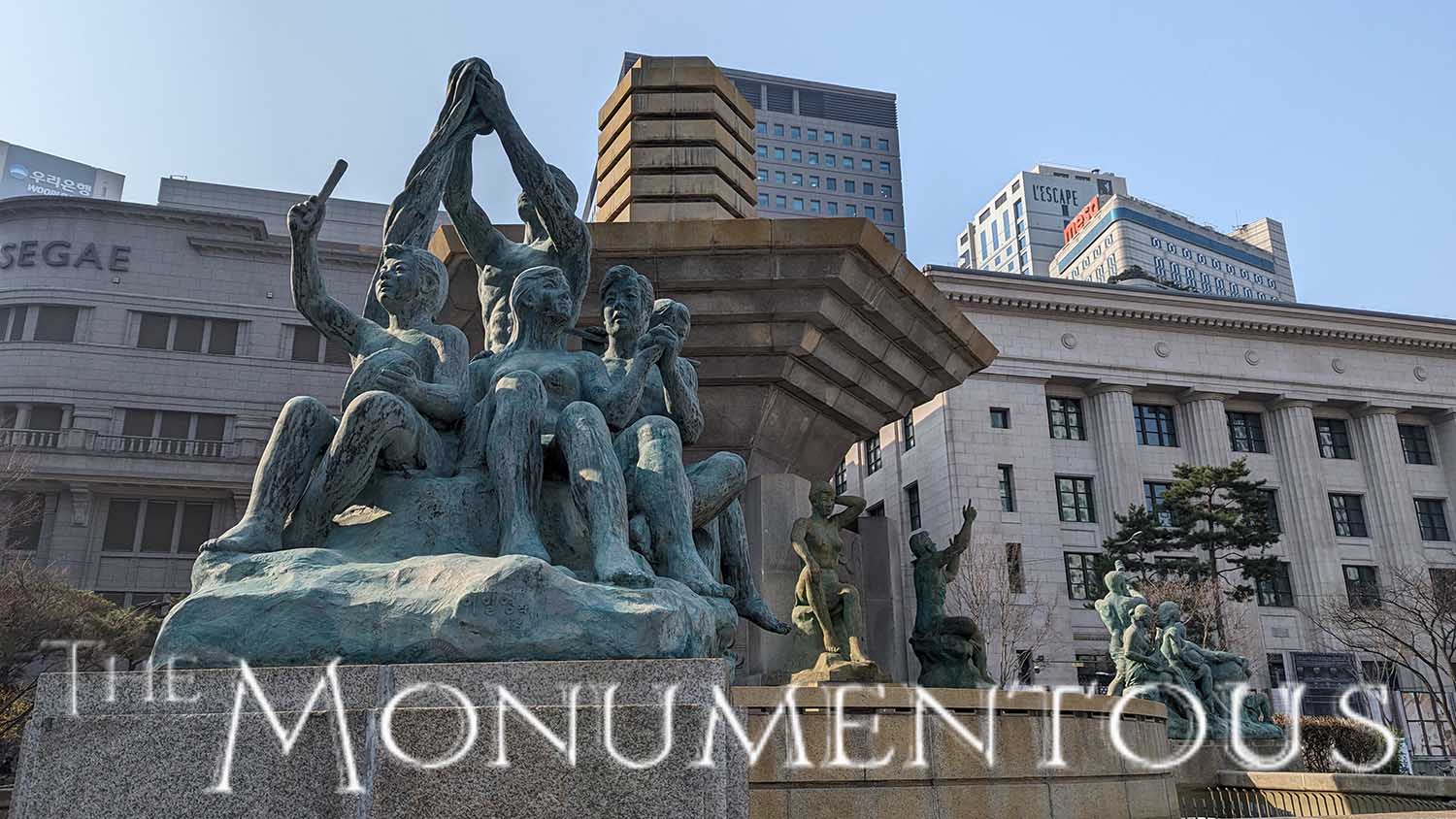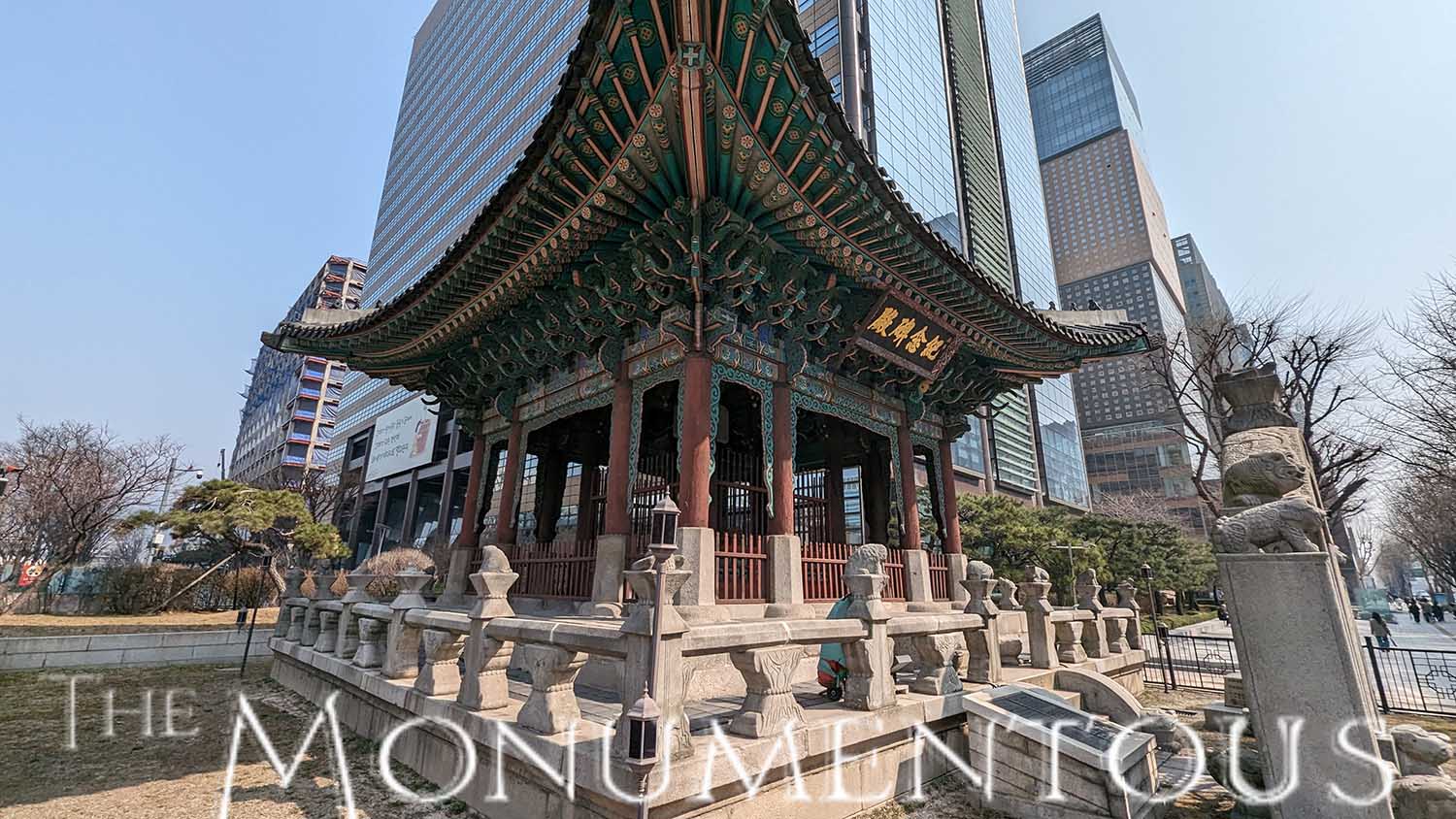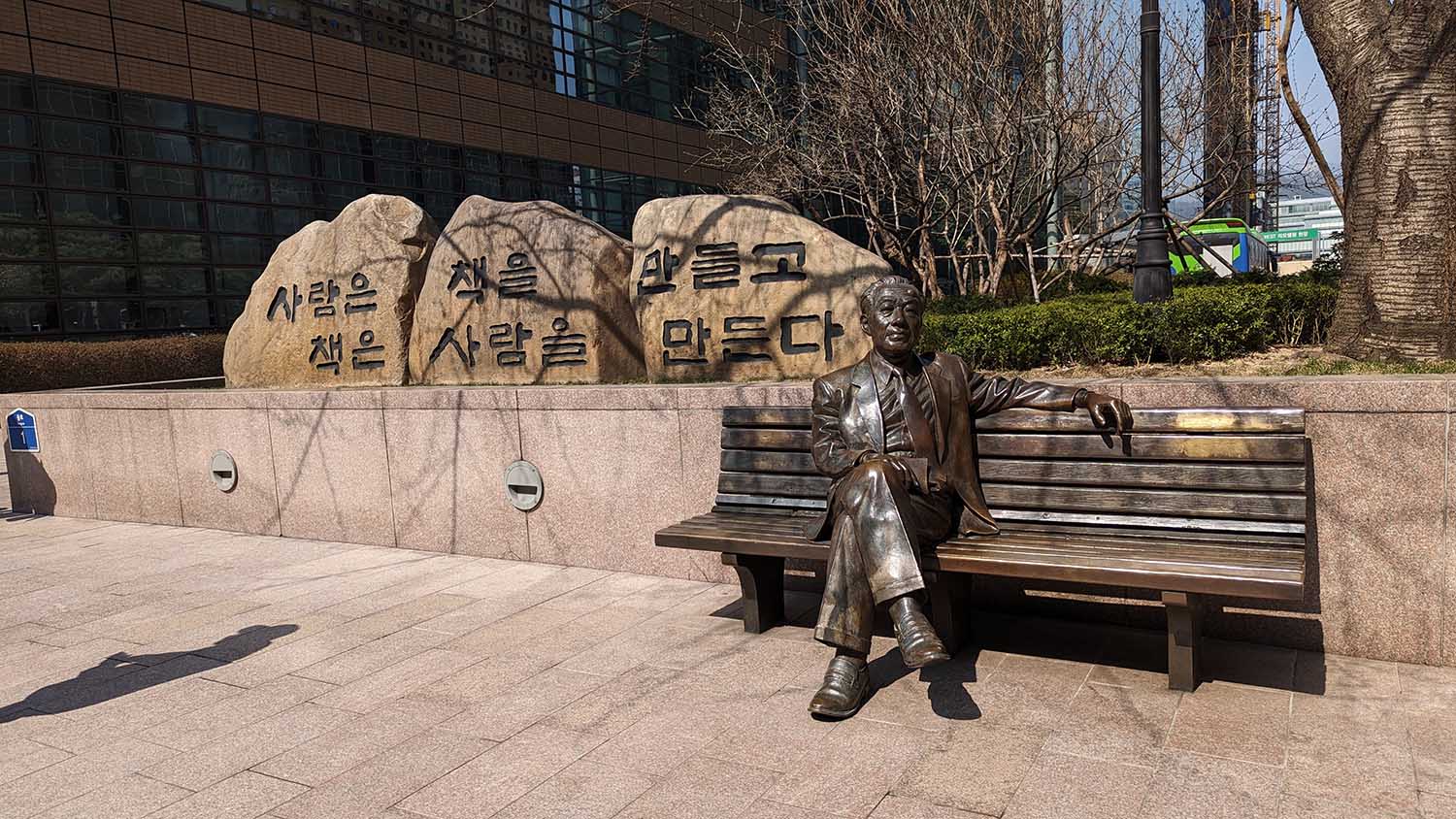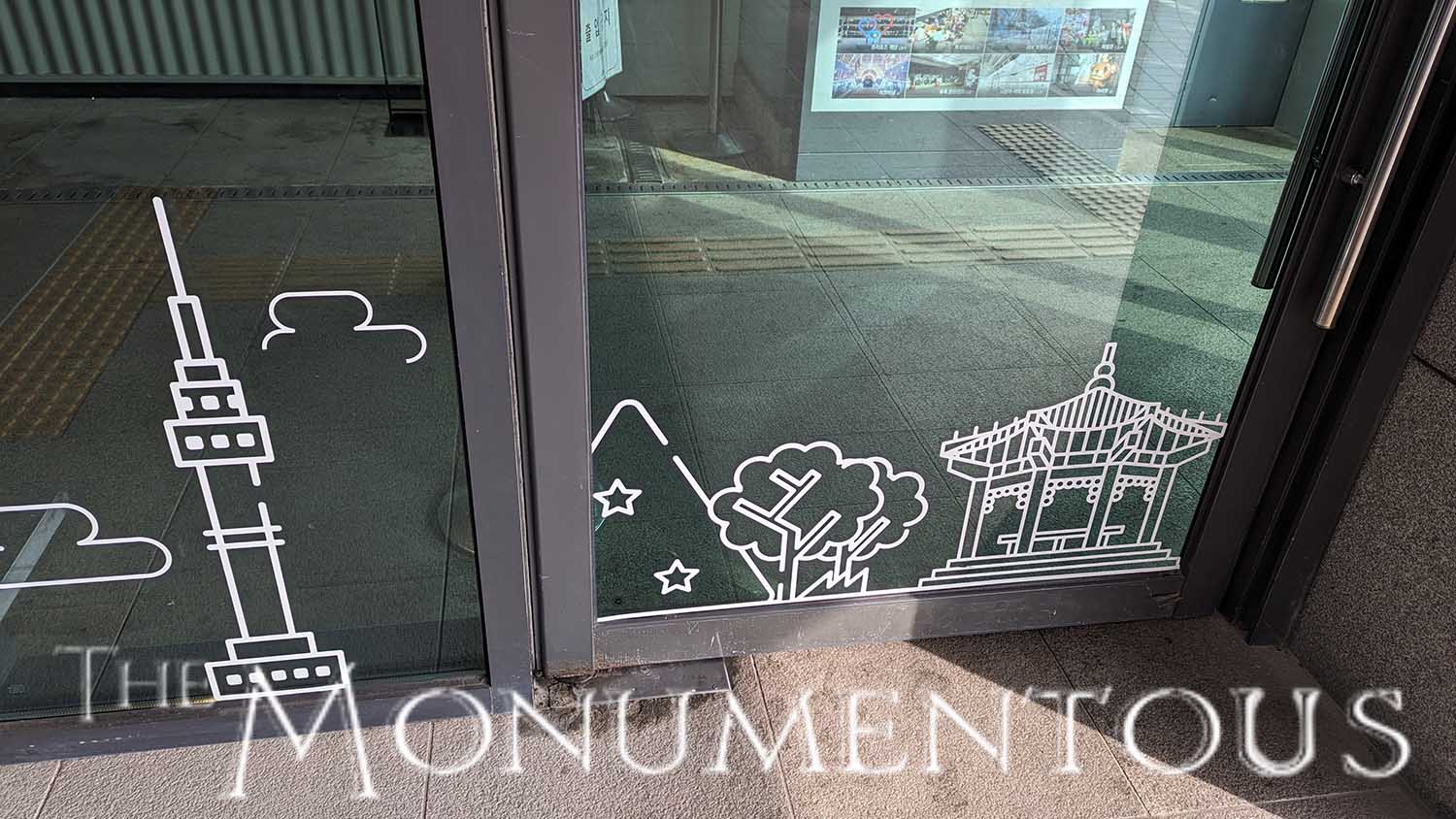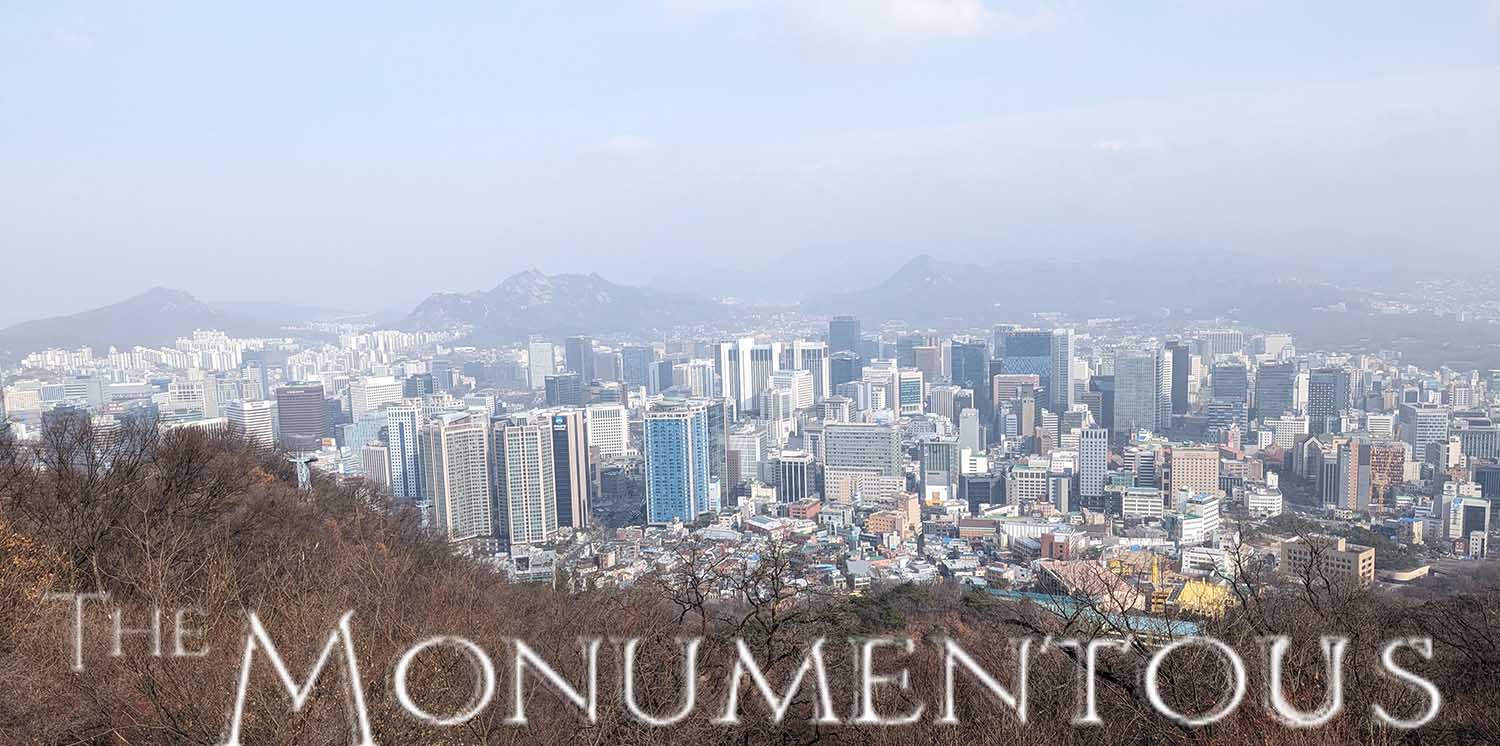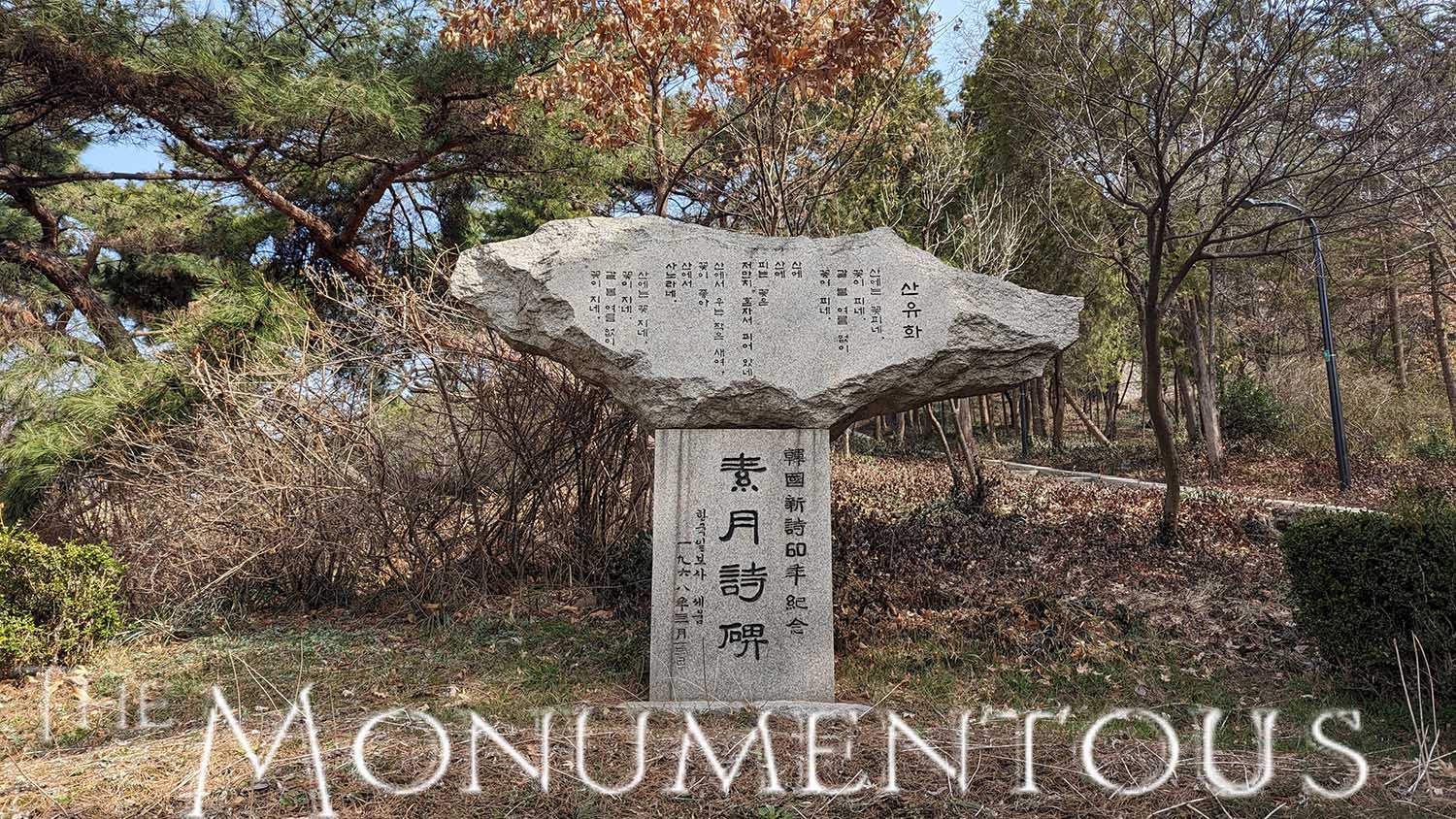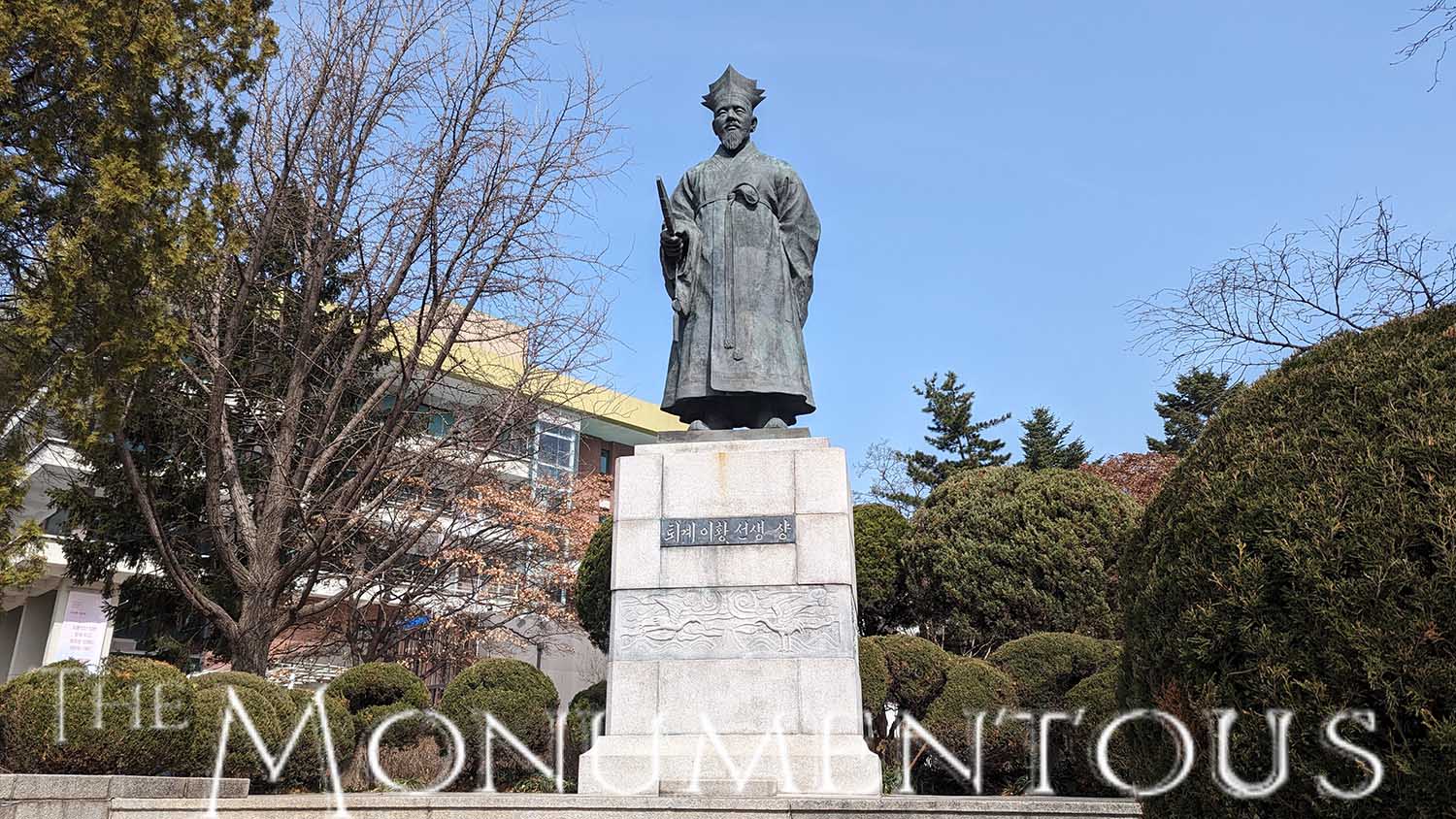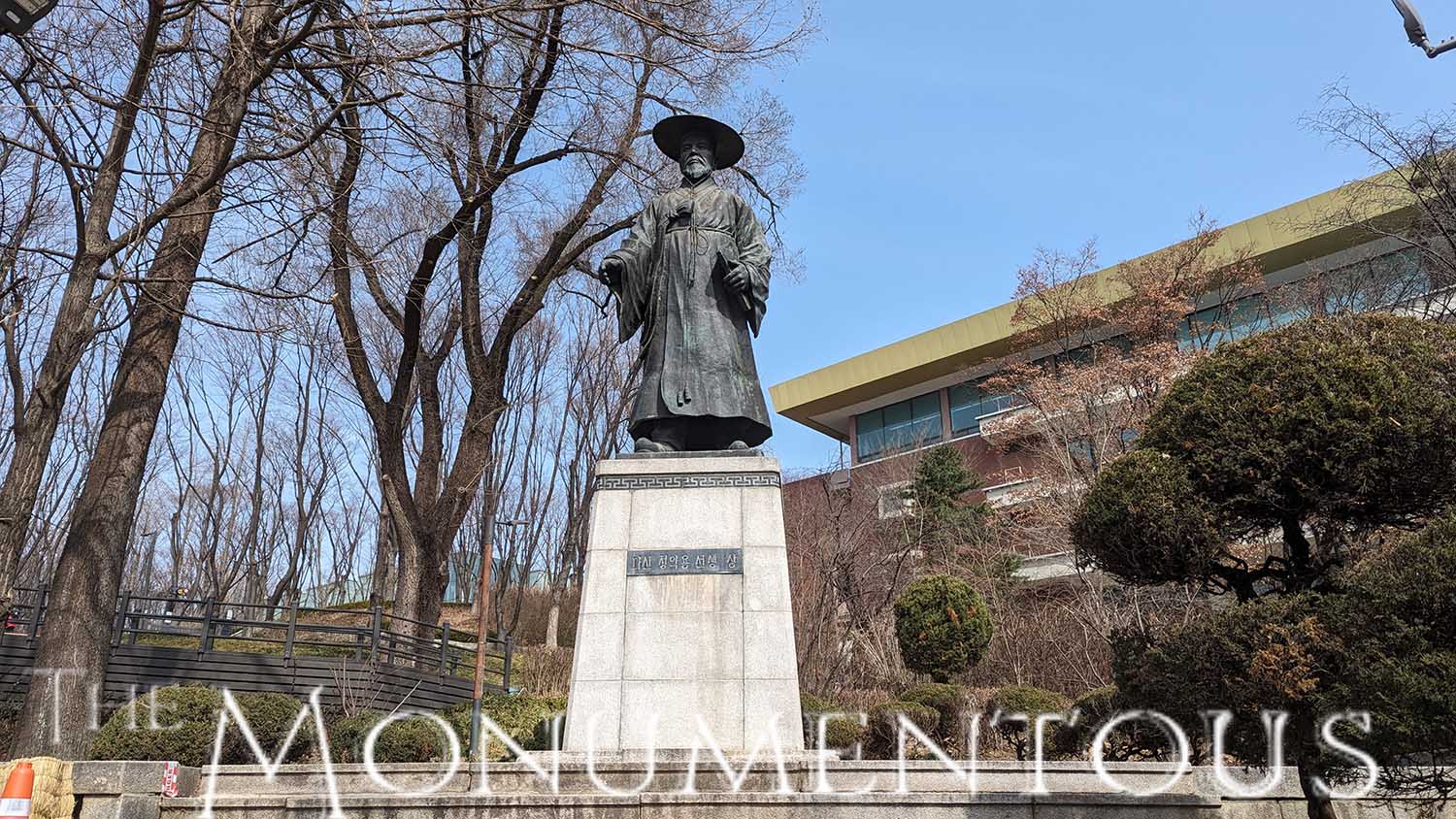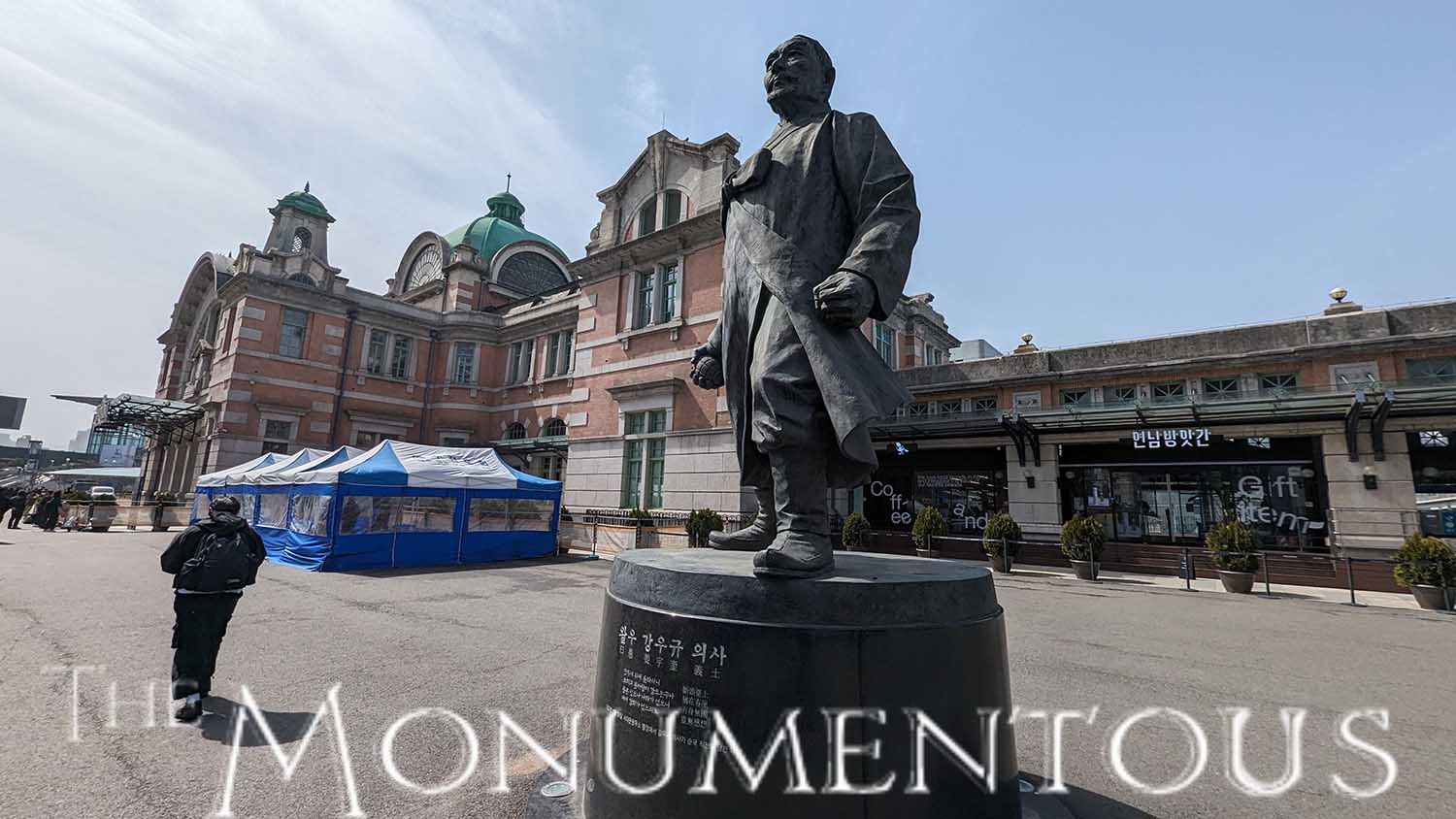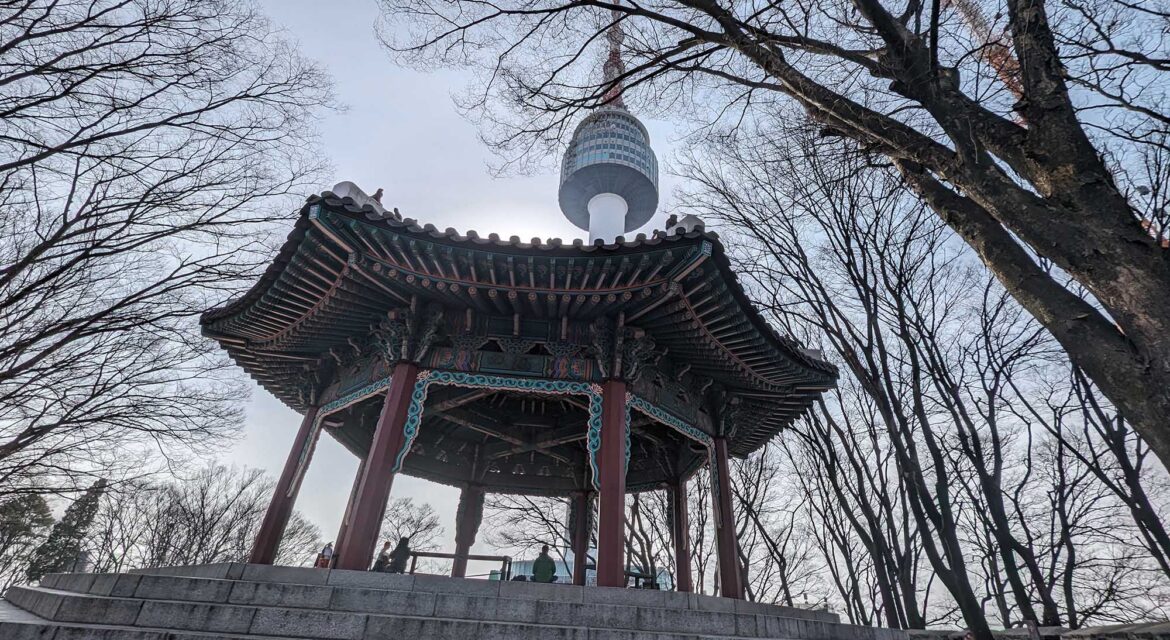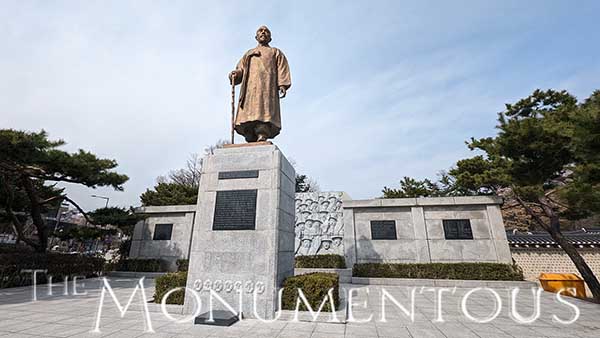 The slogan “Seoul, My Soul” is one you’ll see all across the capital city of South Korea. That phrase captures the essence of the history and culture that the city of Seoul celebrates in various ways, many of which are bolstered by monuments like the Sungnyemun and Gwanghwamun Square. Howeverm the engagement that’s been enabled with residents and visitors by smaller landmarks highlight the various way that the soul of Seoul is about something much deeper.
The slogan “Seoul, My Soul” is one you’ll see all across the capital city of South Korea. That phrase captures the essence of the history and culture that the city of Seoul celebrates in various ways, many of which are bolstered by monuments like the Sungnyemun and Gwanghwamun Square. Howeverm the engagement that’s been enabled with residents and visitors by smaller landmarks highlight the various way that the soul of Seoul is about something much deeper.
A statue of Wolnam Lee Sang-Jae resides near the entrance of Jongmyo Park. At the end of the Korean Empire, he helped lead the nationalist movement after the loss of sovereignty to Japan. He attracted intellectuals and journalists who were otherwise influenced by communist ideology to the side of nationalism.
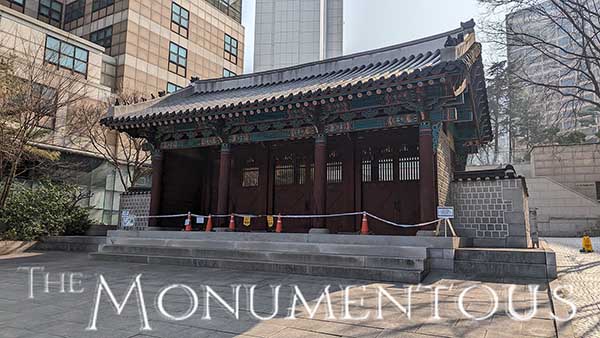 Hwangudan (Altar) was created at the turn of the 19th century to celebrate the new emperor’s ascendence to the throne. Intended to be a place where an emperor performed sacrifices to heaven, tt was composed of a three-storied round-shaped altar. In 1913, the Japanese Government-General of Joseon dismantled Hwangudan except for the stone drum, and the doors, providing modern audiences with a literal look into the past. It was designated as a South Korea Historic Site in 1967.
Hwangudan (Altar) was created at the turn of the 19th century to celebrate the new emperor’s ascendence to the throne. Intended to be a place where an emperor performed sacrifices to heaven, tt was composed of a three-storied round-shaped altar. In 1913, the Japanese Government-General of Joseon dismantled Hwangudan except for the stone drum, and the doors, providing modern audiences with a literal look into the past. It was designated as a South Korea Historic Site in 1967.
Dr. Hyun Bong-hak was a hero of the nation during the Korean War. He saved more than 92,000 civilian refugees during the Heungnam Evacuation. During the war, he served as a civil affairs officer and facilitated the Christmas Miracle of 1950. His spirit of love towards humanity is highlighted in a statue that is lit up in spectacular fashion at night.
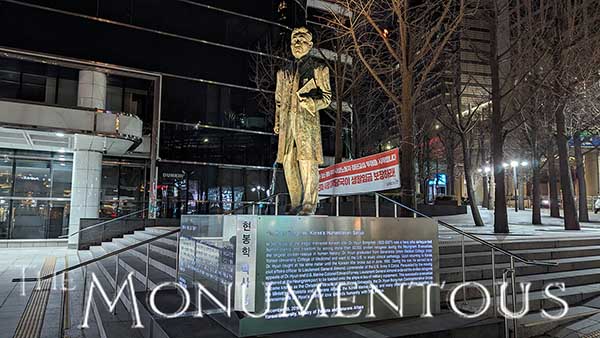 The Namsan Tower Pagoda resides in the shadow of the Namsan Tower, which is also known as the Seoul Tower. Residing at the top of Namsan Mountain, the Namsan Tower Pagoda allows audiences to relax and take in the natural sights and scenery along with the traditional architecture of the nation that is more fully realized in places like Deosksugung Palace. It has also become part of the identity and promotion of the Seoul Tower, helping contrast the past and present of the location.
The Namsan Tower Pagoda resides in the shadow of the Namsan Tower, which is also known as the Seoul Tower. Residing at the top of Namsan Mountain, the Namsan Tower Pagoda allows audiences to relax and take in the natural sights and scenery along with the traditional architecture of the nation that is more fully realized in places like Deosksugung Palace. It has also become part of the identity and promotion of the Seoul Tower, helping contrast the past and present of the location.
Angered by the Japan–Korea Treaty of 1910 that would see Japan annex the nation, Kang Woo-kyu was one of the first violent resisters against Japanese occupation. He worked for independence and in 1919 used a grenade to try and assassinate the governor-general. He was captured and put to death in 1920, never renouncing his beliefs. A statue of Kang, complete with a grenade in hand, resides outside of Seoul Station.
 With a history that stretches back for centuries, the modern city of Seoul embraces and celebrates this history while also making it an active part of the modern city. In this way, the “soul” of Seoul is on display for residents and visitors to engage with, highlighting the incredible benefits that these landmarks as well as the countless others on display across the city can represent in the short and long term.
With a history that stretches back for centuries, the modern city of Seoul embraces and celebrates this history while also making it an active part of the modern city. In this way, the “soul” of Seoul is on display for residents and visitors to engage with, highlighting the incredible benefits that these landmarks as well as the countless others on display across the city can represent in the short and long term.
